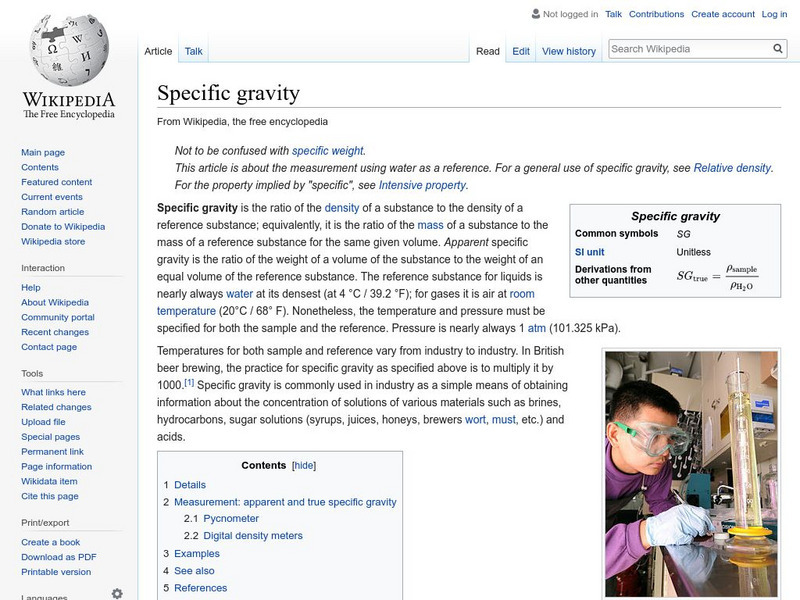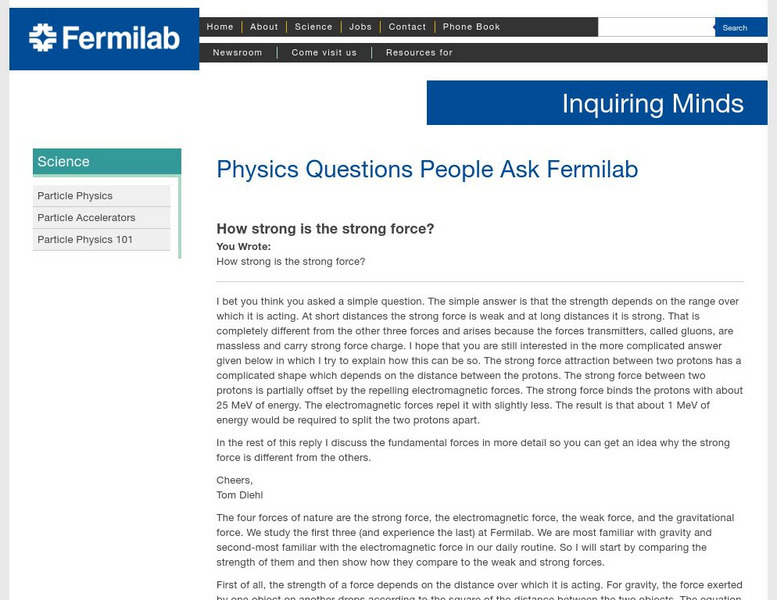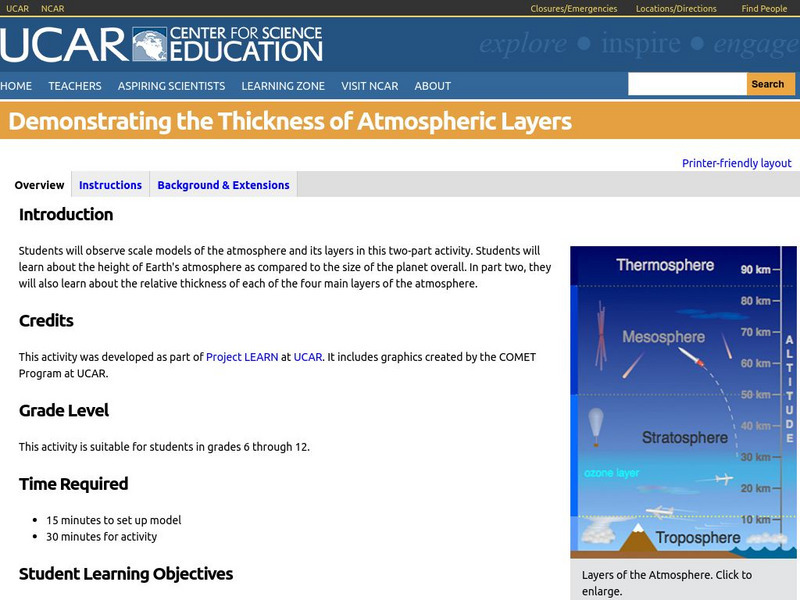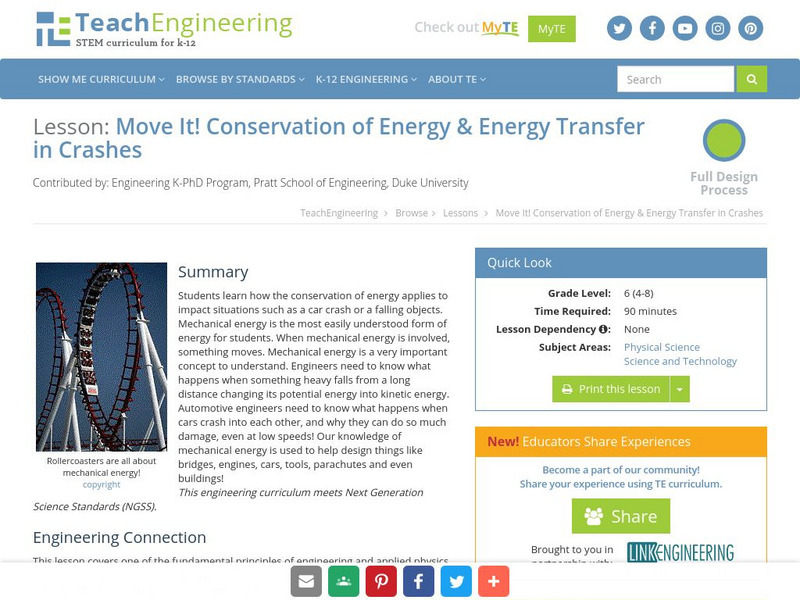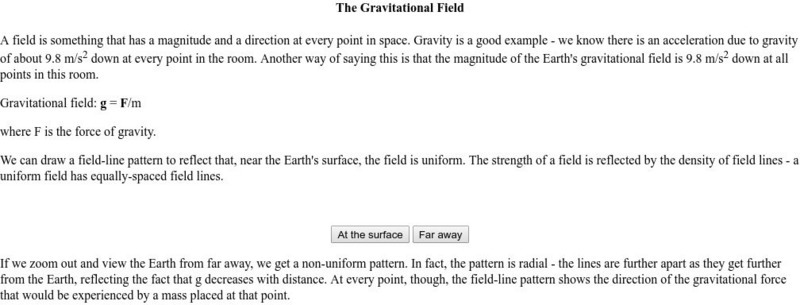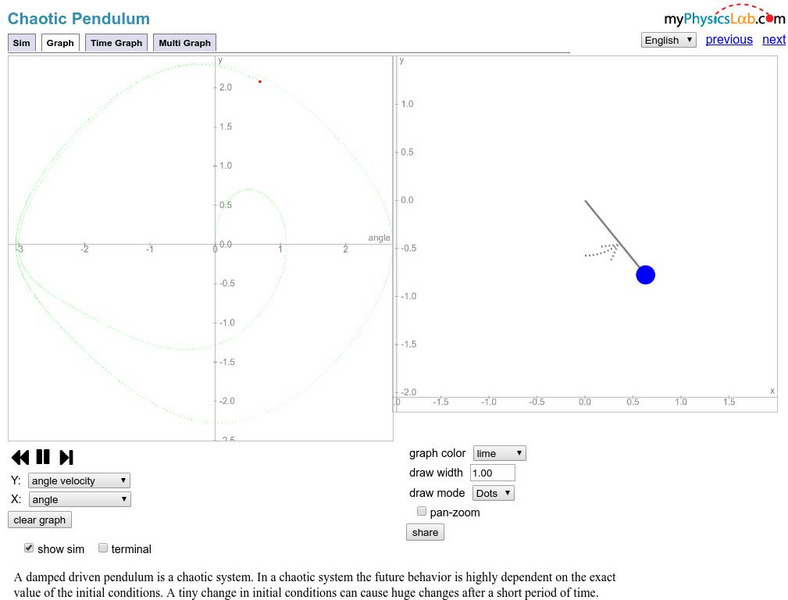Science Education Resource Center at Carleton College
Serc: Investigating the Constancy of Gravity: Free Fall Using a Water Bottle
In this physics interactive lecture demonstration, students will predict what will happen if a plastic bottle, filled with water and having a hole near the bottom, is dropped. Will the bottle fall at the same rate as the water inside the...
E-learning for Kids
E Learning for Kids: Science: Egypt: What Can Forces Do?
A learning module reviewing how much force is needed to push or pull objects. Also learn about the force of gravity.
E-learning for Kids
E Learning for Kids: Science: Pirates: What Are Some Forces Around Us?
Covers the meanings of force, friction, and gravity, and the differences between magnetic and elastic spring force, and between weight and mass. The effect of air resistance on an object's motion is also touched upon.
Khan Academy
Khan Academy: The Buoyant Force Does Not Get Smaller as You Sink
This article explains the buoyant force using a submarine as an example. It also discusses what determines the size of the buoyant force using a formula, and explains decompression sickness better known as the bends.
Other
Fuel Our Future Now: Grade K 2 Module: Vroom! Vroom! What Makes Cars Go? [Pdf]
In this K-2 teaching module, students explore motion, gravity, friction, and energy using objects and model cars. They investigate using hands-on activities with vehicles, as well as online interactives and videos. The culminating event...
My Science Site
My Science Site: What Drops Faster? [Pdf]
This resource provides a simple science activity teachers can use to teach gravity and mass. This resource is in PDF form; requires Adobe Reader.
NASA
Nasa: The Space Place: What's a Barycenter?
This site from NASA helps in explaining a barycenter. "In the case of the Earth and the Sun, both bodies actually revolve, or spin, around the center of the mass between them. This point is called the barycenter."
TeachEngineering
Teach Engineering: What a Drag!
The purpose of this activity is to demonstrate how drag affects falling objects. Students will make a variety of shapes out of paper and see how size and shape affects the speed with which their paper shapes fall. They will also be able...
BBC
Bbc: Gcse Bitesize: Mass, Weight and Gravitational Field Strength
This lesson focuses on gravitational fields and includes what one is, the formula for gravity force, defining weight, formula for mass, an example of how to calculate gravity force, a practice question, and a link to a test.
Wikimedia
Wikipedia: Specific Gravity
Wikipedia offers a brief explanation on what specific gravity is and why it is measured in terms of density of water. The equation for its measurement is also given.
Other
Fermi Laboratory:how Strong Is the Strong Force?
Use this site to learn about the four forces of nature. Also learn what determines the strength of a force. This question and answer site is a link of the Fermi National Accelerator Laboratory.
University Corporation for Atmospheric Research
Ucar: How High Does the Atmosphere Go?
This lesson shows the parts of the atmosphere and their size (thickness) relative to the size of the Earth. It includes background information, lesson outline, links to standards and assessments.
Science4Fun
Science4 Fun: Acceleration
What is acceleration? Brief article discusses how it is measured, deceleration, and gravity.
Science4Fun
Science4 Fun: Mass and Weight
What is mass? What is weight? Illustrated discussion of mass and weight including how they are measured.
Treehut
Suzy's World: Black Holes
Use this site to find out what is a black hole in space and try an experiment.
TeachEngineering
Teach Engineering: Move It!
Mechanical energy is the most easily understood form of energy for young scholars. When there is mechanical energy involved, something moves. Mechanical energy is a very important concept to understand. Engineers need to know what...
NOAA
Noaa: National Ocean Service: Education: Tides and Water Levels
A great resource for explaining and understanding tides. Find out what tides are and why it is so important to monitor them. This is an extensive tutorial followed by a set of review questions. All of the information can be downloaded as...
TeachEngineering
Teach Engineering: The Science of Swinging
Students learn what a pendulum is and how it works in the context of amusement park rides. While exploring the physics of pendulums, they are also introduced to Newton's first law of motion - about continuous motion and inertia.
Boston University
Boston University: The Gravitational Field
Defines what a gravitational field is, its value, and how to calculate it. Field-line patterns are also drawn and explained.
Wikimedia
Wikipedia: Gravitropism (Geotropism)
Gravitropism (or geotropism) is how a plant responds to gravity. Roots have a positive reaction to gravity and they grow toward it. Stems have a negative reaction and grow away from gravity. Learn more about what happens inside a plant...
NASA
Nasa: Kepler and His Laws
This site from NASA provides biographical details about the lives of Tycho Brahe and Johannes Kepler. Discusses Kepler's successes at developing laws of planeatry motion. States the three laws and discusses each one individually....
TeachEngineering
Teach Engineering: Design a Parachute
After a discussion about what a parachute is and how it works, students will create a parachute using different materials that they think will work best. The students will test their designs, which will be followed by a class discussion...
Other
My Physics Lab: Double Pendulum
Experiment with a double pendulum to see what happens to the oscillation when you change the mass, gravity, or damping. Students can also change the starting position. The site includes equations to help students understand what is...
Other
My Physics Lab: Chaotic Pendulum
Experiment with a damped driven pendulum to see what happens to the oscillation when you change the mass, gravity, or damping. Students can also change the starting position. Site includes equations to help students understand what is...




![Fuel Our Future Now: Grade K 2 Module: Vroom! Vroom! What Makes Cars Go? [Pdf] Lesson Plan Fuel Our Future Now: Grade K 2 Module: Vroom! Vroom! What Makes Cars Go? [Pdf] Lesson Plan](https://d15y2dacu3jp90.cloudfront.net/images/attachment_defaults/resource/large/FPO-knovation.png)



